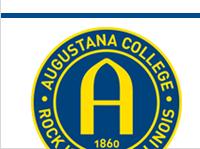Document Type
Student Paper
Publication Date
2014
Disciplines
Botany | Forest Sciences | Other Ecology and Evolutionary Biology
Description, Abstract, or Artist's Statement
As population growth explodes and urban areas expand, studying the ecology of urban areas has become increasingly important. Urban development has been shown to drastically alter native habitats and to severely degrade biodiversity. However, urban landscapes also hold the potential to harbor and support valuable biodiversity especially if managed correctly. We studied the understory herbaceous plant and overstory tree canopy diversity of eight forested ravines in the small cities of Rock Island and Moline IL surrounded by a range of urban development intensity. The goal of the project was to determine whether or not the composition of the plant communities was driven by urbanization and habitat fragmentation. The understory herbaceous community and the overstory tree community were sampled separately. The quality of the plant community was quantified as species richness, Shannon’s diversity index (SDI), and Floristic Quality Index (FQI). Urbanization was quantified as the mean imperviousness and percent developed land cover, and habitat fragmentation as percent forest cover within a 250m radius of the site.
Combined understory and overstory species richness was found to be negatively correlated with mean imperviousness and positively correlated with percent forested land cover. An indicator species analysis of the herbaceous understory communities showed them to be dominated by early successional and invasive species. The quality of the herbaceous communities was negatively associated with increasing urbanization intensity. The quality of the overstory tree communities was also negatively associated with increasing urbanization. Overall, the FQI of each site indicated that the ravines are of moderate to minimal biodiversity significance, typical of degraded urban habitats, yet some sites show promise for improvement. Given that we found urbanization intensity to have a significant negative effect on native biodiversity, we suggest that the ravines and the surrounding neighborhoods be properly managed in order to improve the ecological and social well being of the Quad Cities area. This includes removal of impervious surfaces, use of native species landscaping, and social awareness of the value of local forests.
Augustana Digital Commons Citation
Evans Peck, Carlisle R.. ""Over the River and Through the Woods": An Analysis of Understory and Canopy Plant Diversity in Urban Riparian Forests" (2014). Urban Forest Project.
https://digitalcommons.augustana.edu/urbanforest/2

